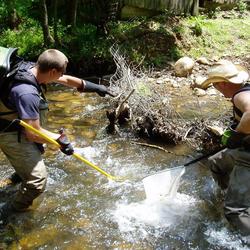Fish Health
USGS investigates pathogen discovery, causes, and drivers; researches disease ecology and immunology; and develops advanced tools for surveillance, risk assessment, and control of diseases that impact aquatic organism health to support the management, conservation, and restoration of aquatic species.













